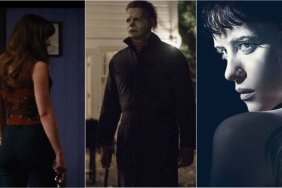Fashion designer Isaac Mizrahi is best known these days for cracking wise while shilling product for home shopping network QVC, but there was a moment when he ruled the fashion industry and was poised to become one of its blueblood legends. Blessed with an innate gift for reading (and actually respecting) women’s bodies, and a natural sense of real beauty, he was the fashion world’s darling. Now, with his name licensed to Xcel Brands, he’s best known to the masses as a sometimes talk-show host and shrewd TV pitchman.
The 1995 documentary Unzipped, directed by Douglas Keeve (then Mizrahi’s boyfriend), captures him at the height of his creative power in the fashion world, in the midst of a creative rebirth. It’s a film that even pulls in people with no interest in (or patience with) the fashion industry, given its center – witty, mercurial, talented Mizrahi – and the way it captures the brutality of the creative process while still being incredibly funny and insightful.
Unzipped opens with Mizrahi walking down a wintery New York street, bundled in a dark coat as he makes his way to his local newsstand. There he reads reviews of the previous night’s unveiling of his Spring 1994 collection. The critical feedback, read in voiceover by Mizrahi, is tough: “Was this collection half full or half empty? That was the obvious question after Isaac Mizrahi’s show Thursday night. What he dubbed a mix was more of a mess…” Mizrahi is devastated by the assessment, admitting that, “I don’t take criticism very well.”
From there, the film shows him climbing out of an intense depression to meticulously plan a comeback. The result is in many ways the prototype for shows like Project Runway and The Fashion Show, the latter of which he co-hosted. In Unzipped we see the designer scrounge for inspiration (in this case settling on a classic Hollywood film), go through the laborious process of selecting materials with which to work, stumble in the execution of his vision, go back to the drawing board, fine tune, fine tune, and then fine tune some more.
Though the look at his process is fascinating, what keeps the viewer involved is Mizrahi’s charisma (in some ways it’s no surprise that he now has a cabaret act) and the glittering cast of characters surrounding him. Those range from a who’s who of the fashion industry to his friend Sandra Bernhard, from the late, great Eartha Kitt (who almost steals the film, and of whom Mizrahi does a stellar impression) to the OG crop of supermodels – Naomi Campbell, Cindy Crawford, and Linda Evangelista heading the list. And the models display a savvy about “working the camera” that is mesmerizing to watch – especially Evangelista. (This was around the time that Evangelista’s reply to a magazine reporter’s query about her modeling fees resulted in her diva hall-of-fame remark, “I don’t get out of bed for less than $10,000.”) At one point, after throwing a bitchy tantrum, she looks straight in the camera with a smirk, as if to say, “Is this not what you came for?”
The film ends on a note of triumph that is in no way a foregone conclusion. We’re made privy to the real blood and gristle of Mizrahi’s creative approach. Ultimately, what makes the film emotionally resonant and powerful art is that it celebrates Mizrahi as an old-school outsider. Having grown up a chubby gay boy in a conservative Jewish community (but with parents that supported him in their own way), he’s a boilerplate example of the outcast who creates/recreates himself, who turns himself into the beloved hero, but whose insecurities and demons still hound him. In fact, it’s in no small part due to the resilience and driving presence of his demons that he is a success, and it’s in capturing all that that the film itself succeeds.





